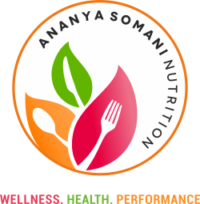How do carbohydrates break down?
Within the age group of 20–79 years, India has 74.9 million diabetics in 2021 projected to increase to 124.9 million by 2045. According to the International Diabetes Federation, one out of every seven diabetic adults worldwide resides in India, and one in every third household has diabetic patients.
(How it’s not just about sweets, a key factor is carbohydrate intake.) One of the key factors in development of diabetes is carbohydrate intake, the quantity as well as the quality of carbohydrates determines how much insulin is required by the body to maintain normal blood glucose levels.
Glycemic index VS glycemic load
The glycemic index (GI) assigns a numeric score to a food based on how drastically it makes your blood sugar rise. Foods are ranked on a scale of 0 to 100, with pure glucose (sugar) given a value of 100. The lower a food’s glycemic index, the slower blood sugar rises after eating that food. In general, the more fiber or fat in a food, the lower it’s GI.
Carbohydrate-rich foods that are rapidly broken down and absorbed into the bloodstream are categorized as high-GI foods. High-GI foods lead to a rapid increase of blood glucose and insulin responses following food ingestion. On the contrary, low-GI foods have a slower and smaller effect on postprandial blood glucose levels and insulin response because they are slowly digested.
Glycemic load is a measure of how much a particular food can raise your blood glucose levels. It takes into account the amount of Carbohydrates present in a serving of that particular food. Watermelon, for example, has a high glycemic index (80). But a serving of watermelon has so little carbohydrate that its glycemic load is only 5.
The term low glycemic load (GL) integrates (a) the GI of the food or diet with (b) the amount of carbohydrates in a given quantity of a food, meal, or diet.
Simple VS complex carbohydrates
Simple carbohydrates are foods that contain a large amount of carbohydrates but very little fiber, thus they raise blood glucose levels quickly. Eg- sugar, refined flour, rice, fruits.
Complex carbohydrates are foods that contain a large amount of carbohydrates but also a large amount of fiber which slows the blood glucose spike post a meal. Eg- whole grains, legumes, pulses, nuts, seeds, vegetables.
The body breaks simple and complex carbohydrates into glucose molecules (sugar) and fiber remains undigested.
All blood sugar spikes are not bad
It is essential to keep in mind that a rise in blood glucose levels is a normal physiological response of the body and our pancreas are equipped to handle this spike. Other than cases in which pancreatic function is impaired such as juvenile diabetes.
Frequent blood sugar spikes can trigger cravings post meals and increase risk of developing type 2 diabetes which can have many health implications.
Can we lower the blood glucose spike or ensure stable levels?
Yes, there’s a lot of ways to manage it. To a carbohydrate rich meal, add fibre, protein and healthy fats to lower the blood glucose spike. This can look like:
- Adding fiber sources like whole grain cereals, millets, pulses, legumes, vegetables, nuts, seeds and whole fruits
- Adding healthy fats like Avocado, olive oil, nut butters, chopped nuts and seeds
- Adding protein like dals, whole pulses, paneer, chicken, eggs, fish to your meals can help ensure stable blood glucose levels.
We also know that movement can help, such as taking a short walk after a meal and incorporating regular physical activity. In addition to that, the overall lifestyle pattern be it in terms of sleep, stress management also matters.
Practical strategies to manage it
- Consume nuts/ seeds with a fruit to increase fiber intake.
- Make sure your lunch and dinner has a good bowl of veggies for example, soup, stir fry, salad, mix veggie sabji (potato doesn’t count here!)
- Include a protein source with breakfast, for example, eggs, yogurt, sprouts, protein powder in your fruit smoothie.
- Opt for whole fruits rather than fruit juices to keep the fiber of the fruit intact.
- Drink cinnamon water post meals
- Consume apple cider / jamun vinegar pre meal (diluted in water),
- Walk for 10-15 minutes post main meals
References
- Vlachos, D., Malisova, S., Lindberg, F. A., & Karaniki, G. (2020). Glycemic Index (GI) or Glycemic Load (GL) and Dietary Interventions for Optimizing Postprandial Hyperglycemia in Patients with T2 Diabetes: A Review. Nutrients, 12(6), 1561. https://doi.org/10.3390/nu12061561
- Maiti, S., Akhtar, S., Upadhyay, A. K., & Mohanty, S. K. (2023, February 20). Socioeconomic inequality in awareness, treatment and control of diabetes among adults in India: Evidence from National Family Health Survey of India (NFHS), 2019–2021. Nature News. https://www.nature.com/articles/s41598-023-29978-y#:~:text=Within%20the%20age%20group%20of,household%20has%20diabetic%20patients4.
- Russell, W. R., Baka, A., Björck, I., Delzenne, N., Gao, D., Griffiths, H. R., Hadjilucas, E., Juvonen, K., Lahtinen, S., Lansink, M., Loon, L. V., Mykkänen, H., Östman, E., Riccardi, G., Vinoy, S., & Weickert, M. O. (2016). Impact of Diet Composition on Blood Glucose Regulation. Critical reviews in food science and nutrition, 56(4), 541–590. https://doi.org/10.1080/10408398.2013.792772
Venn, B. J., & Green, T. J. (2007, November 9). Glycemic index and glycemic load: Measurement issues and their effect on diet–disease relationships. Nature News. https://www.nature.com/articles/1602942#citeas

